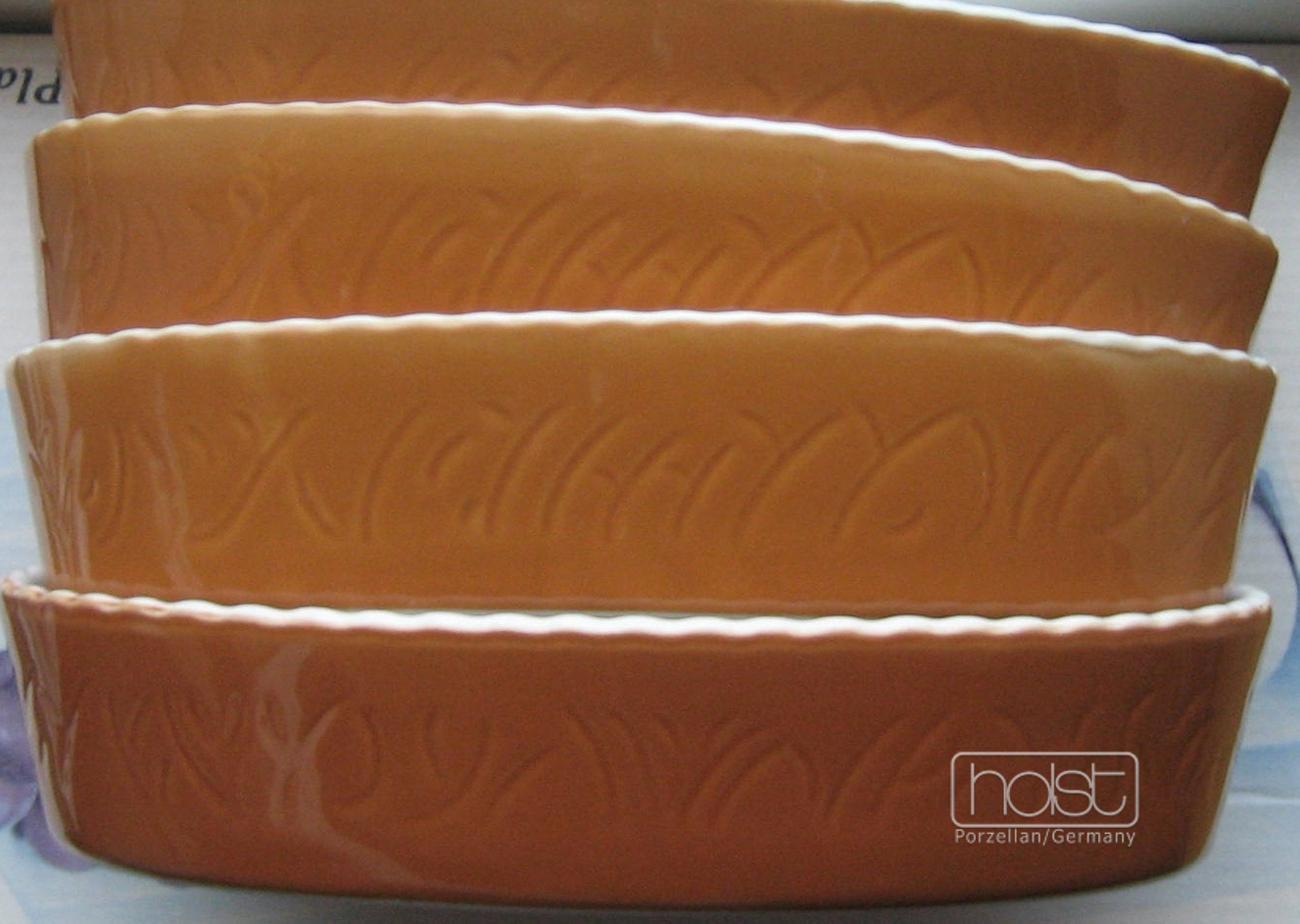Colour deviations

Colour deviations of glaze and decorative colours
Colour deviations in decorations, brushstrokes and background colours are defined as the natural tolerances in colour tone, colour intensity and colour density. Such colour tolerances are completely normal for coloured porcelain and ceramic tableware, even if they are barely noticeable and only become apparent when looking directly at comparable pieces.
Differences in colour underline the individual character of the porcelain production. These purely visual differences are often caused by the different production dates of the individual items. The glaze or background colours are mixed individually for each batch from different components. Even minimal deviations in the milligram range can result in visual differences in the colour compositions. Porcelain colours cannot be mixed and produced exactly like a RAL or HKS colour.
The colours used in a fond glaze usually consist of metal oxides, salts and silicate additives, which are mixed with a glaze additive or a mixture of kaolin, quartz and feldspar. This additive, often also called fire putty, gives the liquid glaze the necessary adhesive strength to bond with the underlying green or raw body.
Colour glazes on ceramic bodies never appear 100% uniform or the same. Ceramic materials react naturally and are not plastic. Beneath the glaze of the porcelain lies a bright white body, which can shine through slightly with coloured glazes and decorations. The coloured glaze is generally always slightly thinner and more transparent than on straight body shapes, especially on snouts, handles and rims. If the glaze is thickened, which is technically not a problem, it unfortunately becomes heavier and tends to form a glaze nose. Such glaze runs look far less attractive than the subtle shimmering through of the white body. This balancing act between consistency and pigmentation leads to minor differences between the production batches of all manufacturers. The rule of thumb applies: The darker the solid colour, the more likely it is that the white body will be discreetly visible in some areas.
In the case of vignettes or coloured print decorations, the colour differences appear much smaller and more varied than with full-surface background colours, which can be applied to the body using both the dip-glaze process and spray decoration.
Find out more about the full-surface colouring of porcelain and ceramic tableware in our article Coloured glazes and recognise what is high-quality and really important. Above all, you should be aware of the possible risks of coloured ceramics and only buy tableware that has a declaration of conformity.
